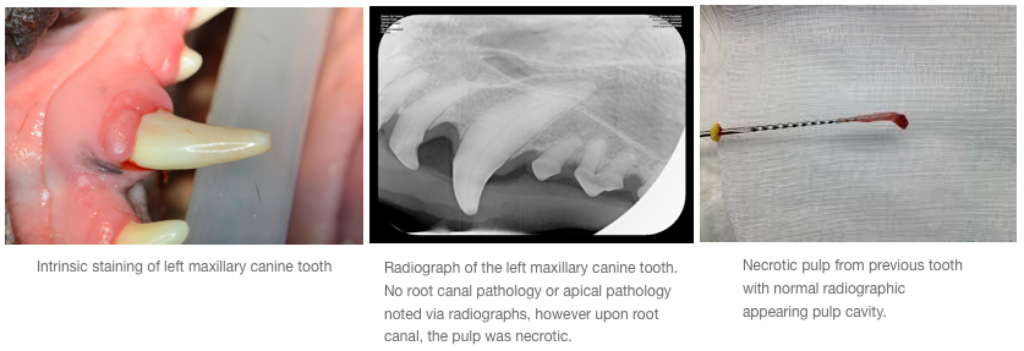21 Jul Treat Discolored Teeth, But Not Necessarily Via Extraction
A study of discolored teeth in dogs showed that 92% of those teeth were non-vital (dead). These teeth studied had been entirely discolored in shades of pink, purple, grey or tan. This study evaluated the discolored tooth via dental radiography as well as evaluating the pulp inside the tooth. Of those discolored teeth, only 42.9% had no radiographic signs of endodontic disease, so it is very, very important not to depend totally on dental radiography to give you a diagnosis of whether a tooth is alive or dead. Therefore, when you see a discolored (intrinsically stained tooth), it’s going to be non-vital and needs treatment.
There are two options for the treatment of a discolored (non-vital) tooth: Root canal therapy or extraction. Leaving the tooth to percolate and potentially cause further oral pain and discomfort is not an option. Root canal therapy is highly advised for treatment of those important teeth such as maxillary and mandibular canines, maxillary 4th premolars and mandibular 1st molars. More frequently, the canine teeth and incisors are involved. A root canal therapy removes the necrotic (dead) pulp, and hermetically seals it with biocompatable materials. I also recommend a crown to be placed on many teeth after root canal therapy.
Barden Greenfield, DVM, DAVDC Your Pet Dentist
Ref: Hale FA. Localized Intrinsic Staining of Teeth Due to Pulpits and Pulp Necrosis in Dogs. JVetDent 2001 Vol 18:1; 14-20)



